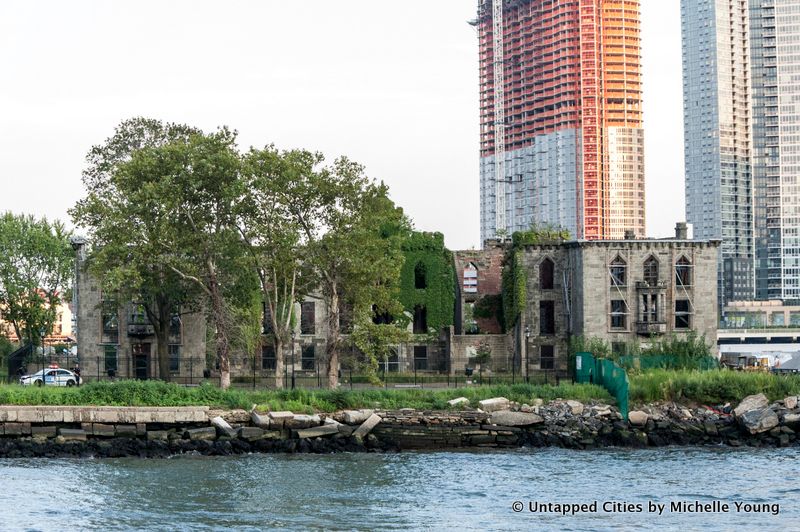NYC’s Forgotten ‘War on Christmas Trees’
Discover how an obscure holiday crackdown affects festive street vendors today!



Rendered plan showing phases I and II, with Queensborough bridge to the right and Four Freedoms Park to the left
According to Mark Regulinksi, one of the SOM architects behind the master plan, Cornell had more to lose than Stanford had to gain. Cornell may be in the same state as New York City but Ithaca could hardly feel further from the thumping financial, creative, cultural capital downstate. Cornell needed a foothold in New York City, and by extension, the 21st century economy. At the last minute, Stanford dropped out of the competition as it seemed increasingly likely Cornell’s ambitious plan would win.
When asked when and where might be his first stop if given the opportunity to time-travel, Bill Gates is said to have answered Bell Labs in 1947. That’s the year the company borne of Alexander Graham Bell first developed the transistor, the electronic switching device that would become integral to the modern computer. It was a factory of ideas that was famously successful at extracting reclusive scientists from their individual laboratories and getting them to collaborate across disciplines. According to Regulinski, Bell Labs was a “steaming cauldron of primordial technological goo,” a title we’d be more likely to apply today to Silicon Valley. The headquarters campuses of Apple, Facebook and Google were all built on that synergistic ideal of Bell Labs.

Roosevelt Island was known as Blackwell’s Island from 1686 to 1921.
Cornell and other rural universities can suffer from “Walden Pond research thinking,” as Regulinski says, where great work is thought best done in solitude. But the aim at Cornell Tech is to integrate an advanced sciences campus directly into a great major metropolis, where ideas sprouted at the university can get access to funding, talent, and proximity to other great ideas. Of course innovation doesn’t only happen in class A office space – it also happens in garages and basements. Part of the appeal of the Roosevelt Island site was not just that it’s a subway stop away from potential venture and start-up capital in Midtown Manhattan, but that it’s also just a subway stop to cheap warehouse space in Long Island City. You still need a car to get from Stanford to Mountain View, Regulinski reminds us.
SOM’s plan for the 12-acre site is organized around an “anti-quad.” Rather than look inwards toward a central green, the campus buildings are surrounded by a landscaped belt that links to most of the rest of the island. The campus is left open for the public to wander through, and its disparate functions are smushed together to foster that famous academic synergy. The architects looked at McKim, Mead & White‘s turn-of-the-century design for Columbia University‘s campus as typical of an older, more rigid approach to academic life.
Cornell Tech’s master plan would need to allow adaptability and tolerance of new buildings, ideas and programs. Part of that looseness comes from the fact that each of the campus’s initial components was designed by a different firm: the main academic building by Morphosis, “the Bridge” co-location building by Weiss/Manfredi, the residential tower by Handel Architects, and the landscaping by James Corner Field Operations.
 The ruins of the former Renwick Smallpox Hospital, just south of the site of the future campus, and a landmarked New York City ruin.
The ruins of the former Renwick Smallpox Hospital, just south of the site of the future campus, and a landmarked New York City ruin.
The master plan also sports some veritable sustainability cred. The campus is sited on a 1930s-era brownfield hospital complex, and the campus planners took pains to reincorporate some historical artifacts and murals from the old Goldwater Hospital, now demolished. The main academic building will be a net zero energy user, and the residential building is to be the world’s largest residential “passive house,” meaning it makes use of sophisticated shading, insulation and ventilation systems to heat and cool its interior.
Beneath a large central lawn are hidden an enormous electrical transformer, a central stormwater retention basin, and a geothermal well system comprised of 70 heat-absorbing wells dug 400 feet into the earth. During demolition and construction, waste and construction materials were hauled off and onto the island via barge, eliminating a constant traffic jam of carbon-belching trucks.

Four different design firms are responsible for the plan’s initial phase, a diversity that was crucial to the master plan set forth by SOM
Last but not least, the master planners were forced to contend with the prospect of sea level rise and future storm activity at a site that is essentially at sea level. The campus’s buildings therefore are situated on a man-made earth-mound lining the center of the island. That Roosevelt Island is a boat-shaped rock in the middle of the notoriously choppy East River should not be lost on the scientists, researchers, entrepreneurs, tinkerers and nerds who will eventually fill up the campus. It is they whom we are entrusting to navigate the foggy sea that is the 21st century urban economy. It’s not until 2045 that the final phase of the campus is scheduled to be complete; who knows what the city–or the world–will look like by then.

The first phase leaves lots of space for future campus expansion, which isn’t set to be complete until 2045
Next, read about the secrets of Roosevelt Island.
Subscribe to our newsletter